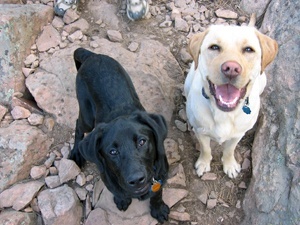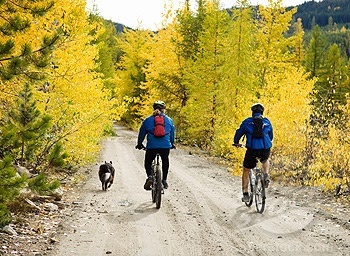SOME exercisers are tortoises. They prefer to take their sweet time, leisurely pedaling or ambling along on a treadmill. Others are hares, impatiently racing through kilometers at high intensity.
Each approach offers similar health benefits: lower risk of heart and stroke disease, protection against Type 2 diabetes, and weight loss.
New findings suggest that for at least one workout a week it pays to be both tortoise and hare — alternating short bursts of high-intensity exercise with easy-does-it recovery. (Mayo Clinic, 2009) A workout with steep peaks and valleys (a.k.a. INTERVAL TRAINING) can dramatically improve cardiovascular fitness, break a fitness plateau and raise the body’s potential to burn fat.
We use interval training at Mountain Trek regularly. Many of our trails are undulating; meaning the trail goes up for less than 100m and then descends for less than 100m repeatedly throughout the hike. So your heart rate goes up for a short burst ascents and then recovers as you descend repeatedly throughout the hike. And if you’ve completed our spin class you’ve definitely been put through interval training!!
So how about considering bringing interval training at least once or twice a week into your cardio regime? Interval training can be done on any cardio machine or outdoor activity. Joggers can alternate walking and sprint. Swimmers can complete a couple of fast laps, then four more slowly. Walkers can find hills or stairs to climb quickly and then walk it out. Cardio equipment such as elliptical trainers or recumbent bikes can be programmed to interval training sets.
There is no single accepted formula for the ratio between high intensity hard work interval and a moderate pace or recovery interval. In fact, many personal trainers recommend varying the duration of activity and rest.
But some guidelines apply. The high-intensity work phase should be long and strenuous enough that you are out of breath — typically one to four minutes of exercise at 80 to 90 percent of your maximum heart rate (PRE 8-9). Recovery periods should not last long enough for your pulse to return to its resting rate.
Here are the four variables you can manipulate when designing your interval training program:
- Intensity (speed) of high intensity work interval
- Duration (distance or time) of high intensity work interval
- Duration of recovery interval
- Number of repetitions of each interval
There are a variety of ways to set up interval workouts. One option is measured periods of high intensity work followed by measured periods of recovery. An example would be 1 minute of high intensity work (such as a sprint), followed by 2 minutes of low intensity exercise (e.g., walking) and alternating that several times for 40 minutes.
You can also do intervals that aren’t measured or known as fartlecks. For example, if you’re outside, you could run or speed walk to something in the distance (a tree, building or good look’in guy/gal) then slow down to recover, repeating the sprint when you feel rested.
You are in charge of the intervals and how hard you work during the work sets. The idea is to work harder than usual in your work sets and to fully recover during the low intensity intervals.
To go hard, the body must use new muscle fibers. Once these recent recruits are trained, they are available to burn fuel even during leisure paced workouts. “Any form of exercise that recruits new muscle fibers is going to enhance the body’s ability to metabolize carbohydrates and fat,” Dr. Coyle of the Mayo Clinic said.
Interval training does amount to hard work, but it is a great way to change your routine, increase results and burn more calories. Best of all, a workout that combines tortoise and hare leaves little time for boredom.
Happy trails,
Cathy, Mountain Trek’s Fitness Director
 10 minutes, that’s all we’re asking, okay, if you’ve been to Mountain Trek, you know the magic number is 40 minutes of exercise 3-5 times a week (in your target heart rate zone, breathing hard but not breathless). A study in a new research field called “metabolomics” is showing evidence that 10 minutes of exercise increases metabolic changes up to one hour. Bonus if you are already fit, you may get more benefits.
10 minutes, that’s all we’re asking, okay, if you’ve been to Mountain Trek, you know the magic number is 40 minutes of exercise 3-5 times a week (in your target heart rate zone, breathing hard but not breathless). A study in a new research field called “metabolomics” is showing evidence that 10 minutes of exercise increases metabolic changes up to one hour. Bonus if you are already fit, you may get more benefits.



 Science backs up the notion that people with K9 companions live longer healthier lives. If at first it isn’t glaringly apparent, think about it. What do dog owners do more than anyone else? They go for walks! Whether you’re hiking, biking or swimming, dogs are eager, joyful friends that are always up for a good time outside.
Science backs up the notion that people with K9 companions live longer healthier lives. If at first it isn’t glaringly apparent, think about it. What do dog owners do more than anyone else? They go for walks! Whether you’re hiking, biking or swimming, dogs are eager, joyful friends that are always up for a good time outside.
